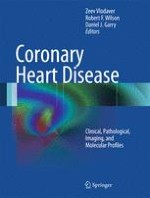Gepubliceerd in:
2012 | OriginalPaper | Hoofdstuk
12. Stem Cells and Atherosclerosis
Abstract
Many factors contribute to the development of atherosclerosis, including endothelial dysfunction. Research shows that certain types of circulating stem cells and progenitor cells may counteract the development of atherosclerosis following vessel injury and promote vascular health. Yet other studies indicate that these same cells may be involved in the disease’s progression. In this chapter, we sort through these findings and examine the limitations of research to date in order to better understand the role of endothelial progenitor cells and smooth muscle progenitor cells in atherosclerosis and plaque rupture.
